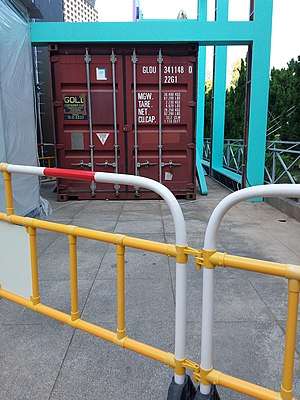Tare weight
Tare weight /ˈtɛər/, sometimes called unladen weight, is the weight of an empty vehicle or container.[1] By subtracting it from the gross weight (laden weight), the weight of the goods carried (the net weight) may be determined. This can be useful in computing the cost of the goods carried for purposes of taxation or for tolls related to barge, rail, road, or other traffic, especially where the toll will vary with the value of the goods carried (e.g., tolls on the Erie Canal). Tare weight is often published upon the sides of railway cars and transport vehicles to facilitate the computation of the load carried. Tare weight is also used in body composition assessment when doing underwater weighing.

The word tare originates from the Middle French word tare “wastage in goods, deficiency, imperfection” (15th c.), from Italian tara, from Arabic طرح ṭarḥ, lit. “thing deducted or rejected”, from taraha “to reject”.[2]
Tare weight is accounted for in kitchen scales, analytical (scientific) and other weighing scales which include a button that resets the display of the scales to zero when an empty container is placed on the weighing platform, in order subsequently to display only the weight of the contents of the container.
Gross weight (the total weight) = net weight (the weight of the goods) + tare weight (the weight of the empty container).
See also
- Curb weight
- Dry weight
- Gross vehicle weight rating
- Trett (obsolete)
References
- Soroka, W. Illustrated Glossary of Packaging Terminology (Second ed.). Institute of Packaging Professionals.
- "tare (2)". Online Etymology Dictionary.
- Yam, K. L., "Encyclopedia of Packaging Technology", John Wiley & Sons, 2009, ISBN 978-0-470-08704-6
- SOLAS: container weighing method 1 & 2